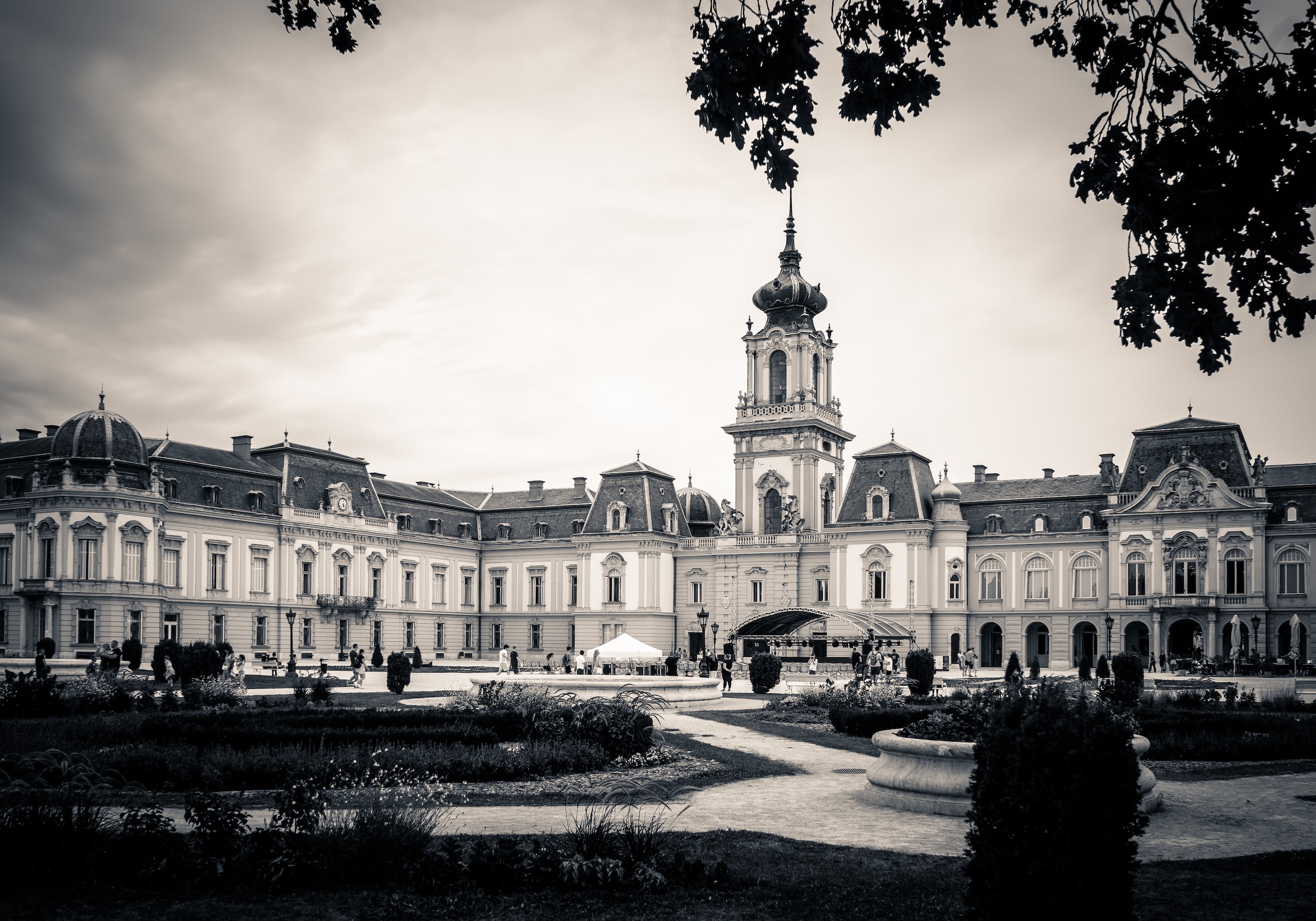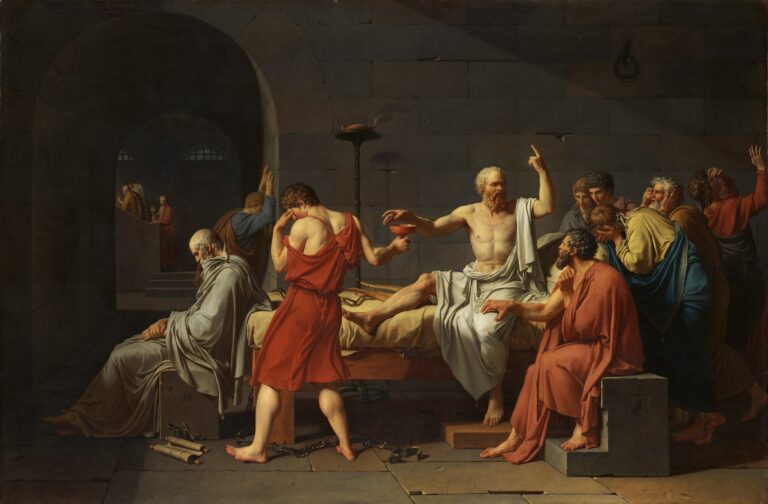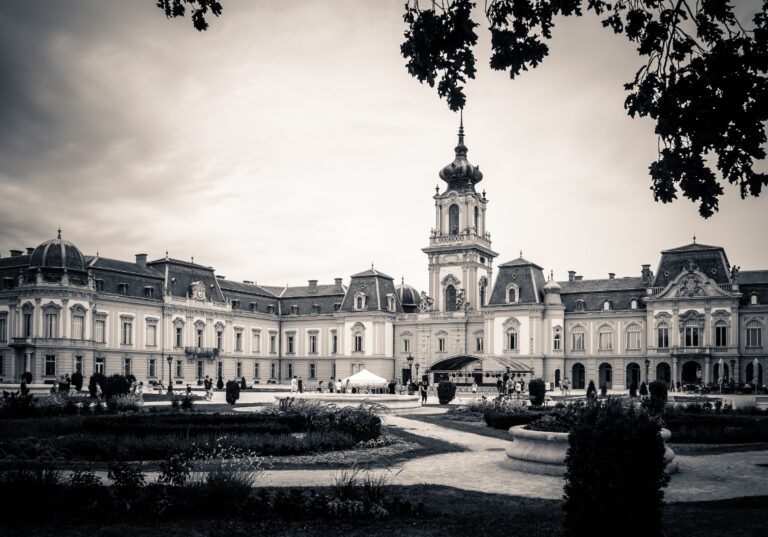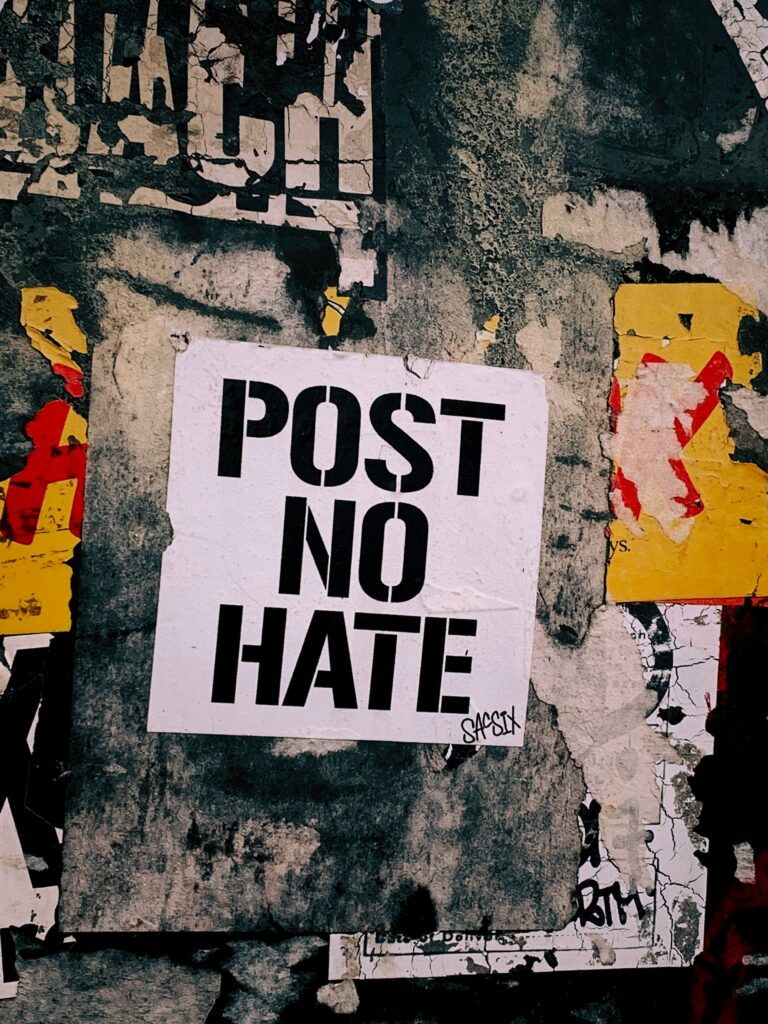While the political regime is a mode of operation, the political era is its spirit and general principle. Concrete political power is effective if embedded in a favorable cultural course. In short: because SPIRIT > MATERIAL, consequently CULTURE > POLITICS. Valeriu Marcu, a Romanian Jew who went from Leninism to the fringes of the Conservative Revolution and the friendship of Ernst Jünger, put it this way: “If the spirit does not seek out power, power will go to the spirit. After all, power without spirit is just a dead weight. Any power without spirit, even if it is the strongest in the world, is the weakest on earth. It breaks and falls. For all that is genuinely spiritual becomes power through a thousand ways and bypasses. The spirit enchants power.”
Two axioms follow from this: 1) the culture of power is far smaller than the power of culture; 2) spirit is power, but power is not spirit. Count István Széchenyi was right when, at the opening of the Hungarian Academy of Sciences, which he founded in 1846, he said that “spiritual triumphs have never been secured by material power”; however, intellectual power has resulted in material triumph countless times. In contrast to the conventional conception of everyday politics, this perspective offers a deeper and broader insight into the processes of public life by discussing legitimacy, moral justification, cultural influence, narrative, identity, identification, and consensus instead of economic indicators. It does so in the belief that in addition to gaining political power, it is also necessary to seize cultural power to transform a transient regime into a stable era. Epoch-making means a desire for the age to be our child instead of being the children of an age. Anyone who adopts this outlook will want to win not only the next election but all others to come and will remain victorious even in the event of an unfavorable election result.
“Governments come and go, but culture remains,” says the conservative philosopher Olavo Carvalho, known as the “Brazilian Gramsci.” The strategic question is: how to establish an era to accommodate a regime? In the field of power (governmental work) and the spirit (cultural work), the objective must be to move the long-term political center of gravity to the Right and to create a conservative cultural standard.
I
Echoing Stalin’s comment on the power of the Pope (How many tank divisions does His Holiness have?), the power of culture is often cynically questioned. In fact, it is solely culture that commands power. The Vatican is still standing, while the Soviet Union disintegrated thirty years ago, and it was precisely a pope, St. John Paul II, who played a decisive role in this by reorganizing, arming, and sending the division of souls into battle. In any case, military power is not everything, especially because it is held together by cultural force, through identification, discipline, and obedience. As Hannah Arendt put it, absolute supremacy only lasts as long as uniformed people obey orders.
From the most distant perspective, “culture is nothing else than nature modified by man” (Arnold Gehlen). As implied by the original, Latin meaning of the word, culture is the “second nature” of man, which tames, controls, and confines, but also transcends his first. Culture is created by man, using the endowments of nature but relying on his own spirit and conscience. Culture is a meaningful, symbolic, collective endeavor aiming to bring the human world into a context broader than the individual, to endow man’s “first nature” with meaning, to convey an understanding of the world, and to provide immaterial handholds, limitations, and directions promising the opportunity of a purposeful, orderly, and communal life.
From a closer perspective, in Wittgenstein’s words “culture is like a big organization which assigns each of its members a place where he can work in the spirit of the whole.” According to T. S. Eliot’s famous definition: “We only mean that the culture of an individual cannot be isolated from that of the group and that the culture of the group cannot be abstracted from that of the whole society.”Antonio Gramsci argued that culture “means a coherent, unitary, and nationally diffused ‘conception of life and of man’, a ‘laic religion’ […] that has generated an ethics, a way of life, a civil and individual conduct.” Elsewhere, he provided the following, holistic description of culture: “It is organization, discipline of one’s inner self, a coming to terms with one’s own personality; it is the attainment of a higher awareness, with the aid of which one succeeds in understanding one’s own historical value, one’s own function in life, one’s own rights and obligations.” There are few phenomena in human life that are independent of culture as defined above, or that are ultimately not cultural issues. Everything is culture and culture is everything.
By general definition, culture – understood in this spirit and therefore capitalized – is a system of symbols that conveys the rules of behavior and conduct created by previous generations. This also means that culture is the product of a community and a shared treasure; individualistic culture does not exist. Culture is embodied in content, channels, and tools such as tradition, language, ideas, values, norms, rules, laws, customs, concepts, etc. These carry the rules of social coexistence and individual behavior, and the order of community life rests upon the transmission, acquisition, and sanctioning of this information. As broadly conceived as possible, culture means 1) material culture, including the production, consumption, and use of tangible goods; 2) social culture, including individual conduct, behavior towards others, as well as institutions; 3) political culture, covering the set of rules and relations governing participation in public life; finally, 4) spiritual culture, manifested in thoughts, ideas, and material accomplishments.
It follows that political culture, including the culture of politics and especially cultural policy in the narrow sense, is only one part of culture as broadly understood. There is politics in the field of culture, which of course can affect, influence, and shape the former; the essence of epoch-making is precisely to do so via slow but determined work. Because culture is what is “in the mind” and what prevails latently in human relations, it permeates the whole of community life, its structure, and its operation, commonly known as society, state, and politics. In essence:
CULTURE + POLITICS = HISTORY
The Hungarian Piarist monk Gyula Kornis (1885-1958) identified a mutual but indirect and unequal impact between culture and politics. In line with his Hegelian outlook, he wrote that “unconsciously or consciously, there is always a worldview, a philosophical position in the backdrop of state activity,” the aim of which is to achieve all this by political means. Kornis’s conceptual understanding addressed an important difference, namely what exists between the nature of spirit and power and between culture and politics (i.e., in scope, validity, and velocity:)
It is in vain that the state dictates what to consider moral and what to deem immoral, what to look on as beautiful and what to find ugly, what to love and what to hate. On the soil of spirit, everything grows softly, freely, and on its own; inward [in one’s soul] nothing can be advanced forcefully. Culture constrained from the outside is a rootless, immature, withered artificial flower. […] At a slow pace and painstakingly, [however] even state power may indirectly develop culture and find its way into the world of the spirit. […] [Therefore] the power of ideas and the idea of power are not contradictory. […] Culture means spiritual power and this spiritual power is one of the main sources of physical power.
II
As already discussed, the political subsystem of culture includes ideas, desires, and plans that organize political conflicts. A cultural endeavor, be it laicization or religious revival, social atomization or focus on the family, can be asserted most directly in the field of politics. The slower and more inobtrusive it is, the more efficient and lasting it will be. It resembles a forest: the fall of an occasional tree makes much noise, but no one hears its growth. In addition to the specific institutional system of political culture (branches of power, parties, fora of conciliation, rules, and levels of decision-making), there exists the equally important system of political ideas. In this sphere, worldview (Weltanschauung) is in first place. Based on philosophy, it consists of elements of theology, philosophy, and social and political theory, and represents a definite way of observing reality. Thomas Molnár once said, “Decisions for the future always have political nature and have their deep roots in philosophy.” Far more practical than this, ideology is none other than a system of ideas organized for political purposes, i.e. an applied worldview.
Ideology is like a miniature version of culture because it conveys patterns, a system of symbols, and a set of values. In the words of Napoleon, ideology is a social romance. This explains why ideology is the most mobilizing of all the “products” of political culture. It is more comprehensible than scientific theory, more practical than worldview, and more concrete than ideas; in short, it is more political. Without a definite ideology, engagement in politics is groundless, and ideologization without political validity is no more than empty chatter.
“Cultural power” forms part of political culture enshrined in the sphere of culture. It uses all the intellectual tools mentioned above: its practice is based on a theoretical standpoint sought to be proven scientifically, it strives to validate a certain worldview, is driven by ideas, and is expressly ideological. The practice of cultural power is the use of culture for political purposes. Through tools such as universities, film production, publishing, the media, arts, and the entertainment industry, cultural power promotes a set of values, conveys ideological messages, and at times gains political influence in areas far from politics.
According to Alain de Benoist, it is part of cultural power that “an open political onslaught may reap the benefits of ideological trench fights […] One step forward in theory = two steps forward in praxis. ”Polished theoretics are integral to the Left because Marxism’s focus on theory and its rationalist, systematic approach (political economics, historical materialism, scientific socialism) have made it structurally ideological. The present-day Left has inherited much of this, especially in the form of various critical theories (the Frankfurt School, French theory, [post]structuralism, post-Marxism.)
Conservatism, which stems from reaction against the French Revolution and has been anti-theoretical since conception, finds it difficult to compete with it, even though it should do so. Regardless of time and space, Thomas Molnár’s claim that “the Left is far better equipped with ‘cultural tools’ than the Right” carries general validity. During the existence of a standing order in need of protection, the “ideologization” of the status quo is unnecessary; due to its naturalness and cultural self-weight, it enjoys wide support, i.e. social legitimacy and consensus. However, the skepticism with which conservatives have related to grand plans based on rationale never ruled out the establishment of comprehensive theories (Friedrich Carl von Savigny in law, Adam Müller in economics, Robert Michels and Vilfredo Pareto in political theory, Émile Durkheim, Arnold Gehlen, and Piritim Sorokin in sociology, and Oswald Spengler and Arnold Toynbee in the discipline of history.)
III
Ever since Burke, the conservative self-definition has been the rejection of rationally planning an even ideology, which in an Anglo-Saxon cultural context and in the light of British historical development is understandable. However, the adoption of this approach is detrimental to continental conservatism. Once the order of the world as protected by conservatives is broken, the beneficial effects of its cultural moment of inertia can still be expected for a while; ultimately, however, it will run out. Ideas, theories, and ideologies cannot be spared, either as an apology or a far more efficient legitimating cultural force, or even more so as intellectual ammunition for an onslaught.
If it is to establish itself in the long run, (post)modern conservatism cannot give up on broadly understood ideological background work. Neglecting theoretical preparation and cultural work, the Right “keeps concentrating solely on the upcoming election and thus always loses some ground” (Alain de Benoist). Due to its disregard for culture, it wins in the short run but loses in the long run. According to Thomas Molnár’s well-argued claim, the Right spectacularly neglects the sphere of culture when in power. Drawing from examples he experienced during his travels, he wrote that “the serious Right generally neglects not only […] propaganda but also the world of ideas as a whole,” and consequently “the culture of our age is characterized by leftism, although a certain right-wing paralysis also contributes strongly, perhaps decisively to this.”
The most spectacular and effective example of the exercise of cultural power dates back to the sixty-eighter generation. The revolution of the sixties was much more cultural than political, which is why it also managed to reshape politics in the longer term. Far more profound processes than university sit-ins, protests, and street clashes took place (even before May 1968, but especially much later.) Through culture, these validated sixty-eighters’ political goals in the longer run. By reframing equality, authority, individual freedoms, and the notion of the family, 1968 as the culminating point of this process was able to transform the entirety of culture. Members of the sixty-eighter generation gained positions in culture throughout Western Europe and the United States, but also in Hungary; this provided them with long-term influence on mass information, the arts, film culture, and academic life. Indirect cultural influence worked much better than direct involvement in party politics.
Sixteen years after 1968, Jean Baudrillard said that “new left-wing power strives to be cultural and intellectual. Rather than seeking to be a cynical, historical power, it desires to appear as the embodiment of values.” Indeed, the “official” Left has transformed since the eighties, and its parties – especially liberals and Greens – tend to serve as a moral rather than a political yardstick. The sixty-eighter Left proclaimed sexual liberation, free love, and the suspension of official authority; in the final decade of the Cold War, “new social movements” advocated pacifism and the abandonment of nuclear power. The demand for anti-racism, multiculturalism, and cultural diversity intensified from the nineties; then, the turn of the millennium saw the celebration of political correctness, sexual minorities, and finally the Willkommenskultur and Black Lives Matter movements.
The new “cultural Left” endows its norms with scientific validity, forms a cohesive worldview around them, presents them as a “beautiful idea” in the media, and conveys its ideological message through the “consciousness industry.” These norms are embedded simultaneously in music hits, children’s stories, romantic comedies, women’s magazines, talk shows, and televised talent competitions, leading to an unquestionable new cultural consensus. Soft cultural themes eventually become hard political reality. This explains why, despite the steady decline of support for liberal parties over the past decades, liberals continue to command the majority in culture. As a result of their strategy, they lose elections but win the culture war. After 1968, the Right was culturally routinely in a losing position even if it scored an election victory.
Because of its comprehensive and multifaceted influence, it would be more accurate to use the term cognitive power instead of cultural power. It should be perceived as an instrument of cultural domination that is both symbolic and magical, linguistic, and discursive, intellectual and emotional, canon-forming and authenticating, identity-creating and shaping, as well as a source of both meaning and narrative. This concept of power provides an opportunity to imagine a zone that is superior to direct state, social, political, and economic power.
Antoine-Henri Jomini is credited for one of the greatest innovations in the theory of military strategy. In his classic work The Art of War (1838), the Swiss-born military historian set out mass armies’ rule for victory, which is “to throw by strategic movements the mass of an army, […] the difficulty lies in recognizing those points.”Depending on the battle, the Schwerpunkt can be a wing of the enemy or his entire army, the base of his supply or a geographical point of the battlefield. Culture is the focal point of long-term political struggle – this is where the greatest force must be targeted. Ultimately, all political issues are rooted in culture.
IV
Oswald Spengler wrote that “every single decade has a meaning, almost every year has its own ‘image’.” Many believe, however, that the political classification of various historical periods is wrong because it is impossible to draw a sweeping average of the intellectual content of any time interval. But even if we did so, they continue, we would still only be able to compile statistics on the intellectual life of an era at the price of paring extraordinarily high peaks of achievement. However, the opposite is true! It is precisely across these soaring peaks that the line of the intellectual and political keynote of the accommodating age can be drawn. All ages bear a spirit carrying either a positive or a negative sign, and it is not uncommon for one of the battling ideas to have repercussions on the other. Thoughts defining eras translate into action, for “ideas have consequences” (Richard Weaver.)
In the aftermath of the general cultural revolution of the sixties and the resulting lengthy left-wing era, the revolution against revolution brought about a long-term political victory for Ronald Reagan and Margaret Thatcher. Beginning in 1979-80, their counter-revolution in economic and foreign policy culminated in the eighties and defined the final stage of the Cold War. In political terms, it was a backlash to the aspirations of the previous two decades. The two-cycle Reagan administration and the thrice-elected Thatcher cabinet were followed by one or two more conservative governments in both Anglo-Saxon countries (George H. W. Bush in 1988-93 and John Major in 1990-97), extending the hegemony of Anglo-Saxon neoconservatism to almost two decades. In Western culture, the Reagan administration is a picture-perfect ideal of the shift to the Right. Edwin Meese, a senior official in the administration and a close adviser who had worked with Reagan since his days as governor of California, wrote that “by 1980 really became the point of proving that conservatism was a national governing philosophy, and it was in that period that things like the end of the Cold War, the economic revival of the United States, and the restoration of the self-confidence of the people made real strides for conservatism in this country.”
After great revolutions and rapid transformations based on abstract designs, societies strive for a return to the abolished forms and the old, traditional order. This is the base of an “intellectual and mental shift” (Helmut Kohl) from which political change emerges. After historical drunkenness, there came conservative Katzenjammer. A German political scientist, Franz Walter, himself a member of the sixty-eighter generation, wrote forty years after 1968 that “the long, long period of libertarian individualism, the rampant anything goes approach that characterized the two or three decades after ’68, will undergo correction and trigger a countermovement. People seek secure rules, roots, responsibilities, continuity, common rituals, and social belonging.”
After the turn of the millennium, a liberal newspaper remarked with some disappointment that “the children of the rebellious sixty-eighter generation also seem to be rebelling, only against their parents’ left-liberal ideas.” Commenting on the findings of his 2004 surveys, a Hungarian youth researcher even stated that “a kind of conservative turnaround can be observed, expressed in social worldview, values and, naturally, also in political preferences and sympathies.” (Gábor Kálmán.) This is the counter-revolution of lifestyle, the impact of which was exacerbated by the global economic crisis beginning in 2008. The crisis enhanced the value of work and security as opposed to bank loans. Shortly after the semi-unconscious cultural counter-movements, political resistance against “sixty-eightness” also appeared. During the 2007 French presidential election, the post-Gaullist, Republican candidate Nicolas Sarkozy sparked outrage by setting the main stakes for victory against the “cynical and immoral” Socialist Party: “The issue in this election is whether the legacy of May ’68 will be carried on or wiped out forever.”
A higher issue, brought to the surface by the global economic crisis, is how the economic views, philosophy of governance, and cultural conception of the sixty-eighter generation became problematic. This was expressed by Viktor Orbán in a 2009 speech, in which he identified a “shift to the Right” in Europe. The speech was based on the premise that the former Left, which turned liberal in the 1990s, had given up representing workers’ interests and became a frontrunner for pro-market policies while running a liberal cultural agenda. In contrast, right-wing politics is about the restoration of social solidarity, access to employment, and prioritizing the national interest in the face of transnational market actors. In Orbán’s vision, the demand for a new era is developed into a powerful political and cultural strategy. “The nightmare of extreme neoliberal governance is civic governance, bringing about peace, balance and security, as well as its custodian, contemporary Christian democratic-civic center-right politics.”
The veteran American conservative activist Emmett Tyrrell wrote that the twenty-year right-wing era marked by Reagan and the two Bushes (1980-1992 + 2000-2008) proved that the Republicans were able to claim the White House and Congress more often and for longer periods than the Democrats, whose support had been dwindling since ’68. Nevertheless, attempts to break liberal mentality had failed for decades. He argued that what is to be done is to not just be a political party but to be a dominant political culture, “like as before the New Deal: we need to establish a new order.”This is the task of epoch-making.
V
Not all political regimes translate automatically into an era. A regime is a set of laws, procedures, and political decisions, i.e. operation itself, embodied in institutions shaping its form and political structure. An era equals culture in its broader sense: the totality of social customs, collective beliefs and worldviews, and an intellectual milieu; i.e. substance itself, a cultural climate. Finally, order is the synchronicity of regime and era, the harmony of political regime and cultural epoch, a unity transpiring all subsystems of society. Order is the synchronicity of spirit and power.
In the sense of cultural history, era means “an experience of the world, a way of thinking, and an image of man that is relatively coherent,” to be seen through the lens of works, accomplishments and texts created within it. By nature, its boundaries are indiscernible (Bara Katalin—Csutak Judit.) Although fundamentally not independent of cultural eras, the political epoch is far more easily grasped through its clear timeline, prominent political force, ideology, and the persona of its leader. According to the historian and philosopher Tibor Joó, “The spirit of any given historical age is apparent in the entire domain of culture.” The characteristics of each period can be traced to cultural trends prevailing during the period: in dressing, architecture, design, and cultural accomplishments (among others, magazine culture, publishing, film, fine and musical arts.)
Several factors are necessary to identify an era encompassing a political system. It must cover a lengthy period, with continuity and a well-identifiable political structure; similarly, it must be characterized by institutional permanence and political stability. It creates a distinctive legal environment and cultural milieu, responsible for bringing peace, predictability, social tranquility, and prosperity. Moreover, it includes the establishment of personal continuity, shared memory, tradition, and heritage, reinforced by the creation of cultural achievements embedded in public thinking and social discourse in the form of iconic works of art, memorable historical events, lasting buildings, shared successes, and collective myths. Each past era has a common, mostly coherent memory of the past (belle époque, good old days, Kaiserzeit.)
While a political regime can only be operated temporarily against an era that provides it with a time frame, a political era will prove to be lasting even if it at times hosts a system contrary to its cultural content. Anyone planning for the long term knows that rising to government or even establishing a regime is not enough; an era must be built.
VI
The contemporary history of Hungary is a good example of an era spanning regimes. It is also instructive about building a new, conservative era to replace the old one. Between 1945 and 2010, Hungary experienced an uninterrupted progressive era, the initial two-thirds of which (1945/48-1989) was a communist dictatorship and the final twenty years of which (1990-2010) saw liberal hegemony. The main reason for this continuity is that instead of coming to an end in 1989/90, the forty-year communist period continued in many respects for a further two decades in a “post-communist condition”(András Lánczi.) This was characterized by the fundamental persistence of structures of thinking, as well as the personal/family continuity of elites and the composition of the intelligentsia, which had the monopoly of interpretation. The two decades between the change of regime and 2010 were an extension of the political and cultural era that began in the second half of the 1940s and which survived the substantial constitutional, economic, and foreign policy changes of 1989/90.
1990 was not the beginning of something new but rather a continuation of the old in a different form because “with regard to the structure of reality, the way of thinking, logic and personal continuity of (post-)communism still prevails behind the existing apparatus.” (G. Fodor Gábor.)
Although the adoption of democracy, a competitive multi-party system, and a market economy, together with the changing framework of international integration (the EU and NATO instead of COMECON and the Warsaw Pact) gave rise to an entirely different world, what remained unchanged was at least as important! (G. Fodor Gábor—Kern Tamás.) In brief: the regime changed but the era remained.
Between 1990 and 2010, the post-communist period conserved the perpetuation of the political and economic nomenclature, the practice of technocratic reformism known in Hungary since 1968, and the liberal language of the so-called “democratic opposition,” as well as the cultural privileges of intellectuals fluent in it. Consequently, the hubs of economic life and decisive basis of culture remained in the hands of an elite that fundamentally characterized the previous (and continuing) era even after the change of regime in 1989/90. Following the forty-five years defined by communism, the nature of governance and its intellectual direction remained intact during the ensuing twenty-year left-liberal period. Of course, all this did not mean that coming to power from the Right was impossible between 1990 and 2010; however, rule was in the hands of left-liberal forces throughout this period. Therefore, the two right-wing governments (1990-1994 and 1998-2002) had to work against heavy political, economic, and foremost cultural headwinds. It was proven that cultural hegemony is at least as important as political dominance. In the words of Antonio Gramsci, the man who coined this phrase, “Together with the problem of gaining political and economic power […] must also face the problem of winning intellectual power.”
Commenting on the 2010 elections culminating in a two-thirds parliamentary mandate, Viktor Orbán put it bluntly when he said that “today, a revolution has taken place at the voting booths.” That is, a revolution had occurred by means of voting instead of an electoral procedure with revolutionary consequences. This marked the beginning of a process that lasted several years, during which the regime change of 1989/90 was finally materialized and concluded. At the same time, it gave way for the construction of a new system, which also marked the beginning of a new era.
Thus, the prior political system was fully wound up after 2010, and the chance of a conservative epoch was created. This requires two factors: 1) right-wing government with high popular support and the political dominance of the Right; 2) the continuation of long-term cultural work, indispensable for the establishment of conservative cultural hegemony. Whether a change of era will follow the completion of regime change in public law, politics, and the economy is primarily a cultural question.
Compared to politics, the transformation of the intricate network of culture is a lengthier task. Let us not believe that “it is as if we have conquered spiritually when we won only materially” (István Széchenyi). We are faced by three tasks in this situation. 1) Since conservatism is largely a defensive school of thought, it often performs less well in creation, dreaming, and planning. First, this needs to be changed. 2) The Right is either content with performing the critique of left-wing political aspirations and liberal thought or seeks to create values worthy of preservation. While the former is a reactionary phenomenon, the latter is more revolutionary, corresponding to the creation of a self-conscious, future-oriented, active, and dynamic conservatism. This is what we need. 3) It is necessary to operate and interconnect the emerging cultural institutions and structures.
The text is an expert from Márton Békés’ book: Cultural warfare: The theory and practice of cultural power. Translated by Ferenc Sullivan, Language editors: Liz Heflin, Patrick Egan. Foundation for Research on Central and Eastern European History and Society, Budapest, 2022. Originally published as Békés Márton: Kulturális hadviselés. A kulturális hatalom elmélete és gyakorlata.Közép- és Kelet-európai Történelem és Társadalom Kutatásáért Közalapítvány, Budapest, 2020.





